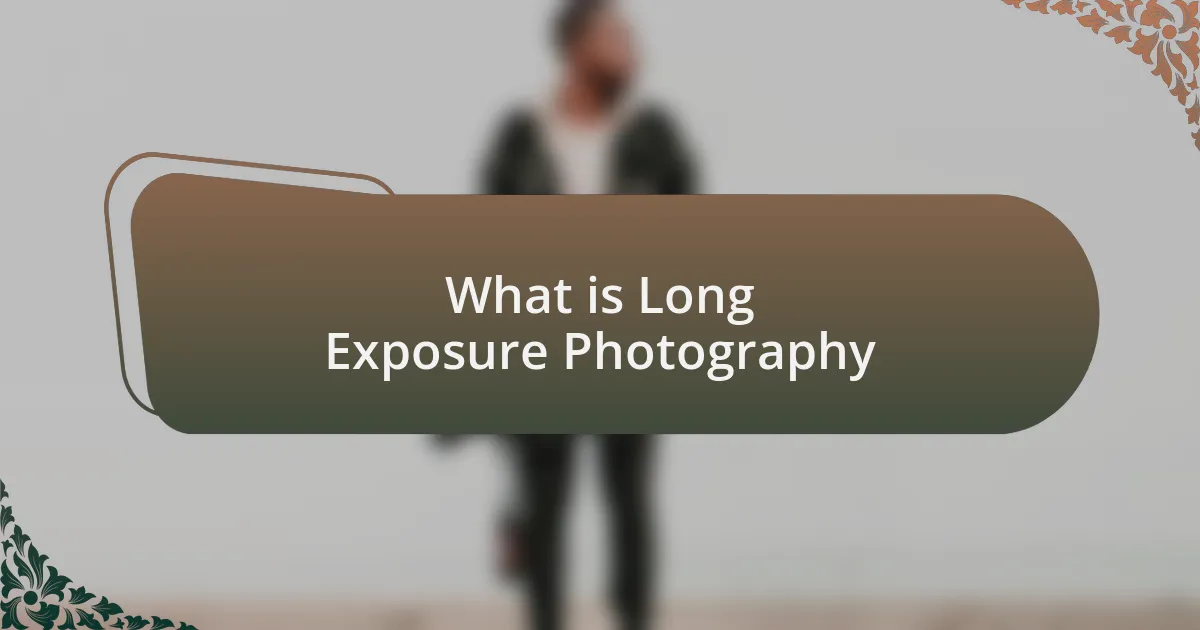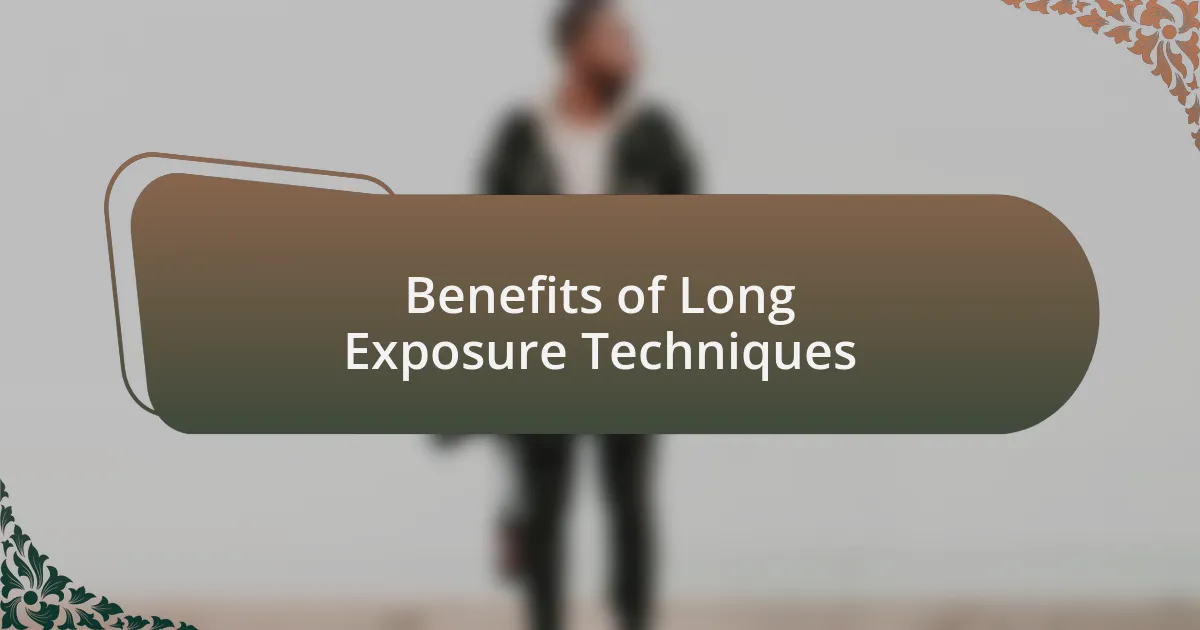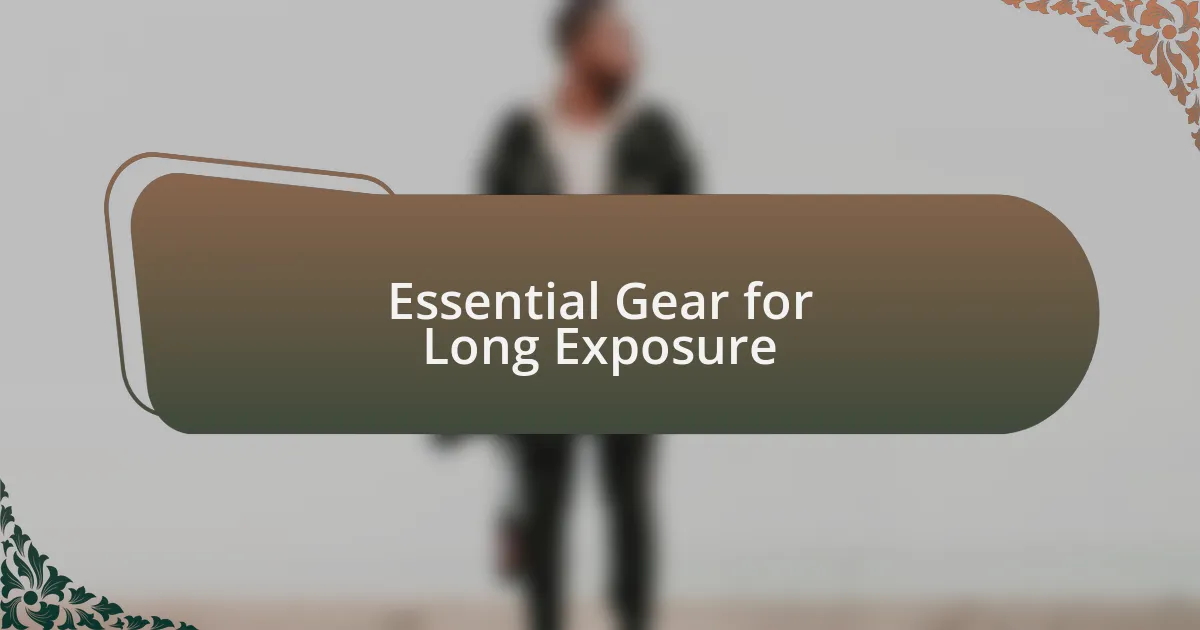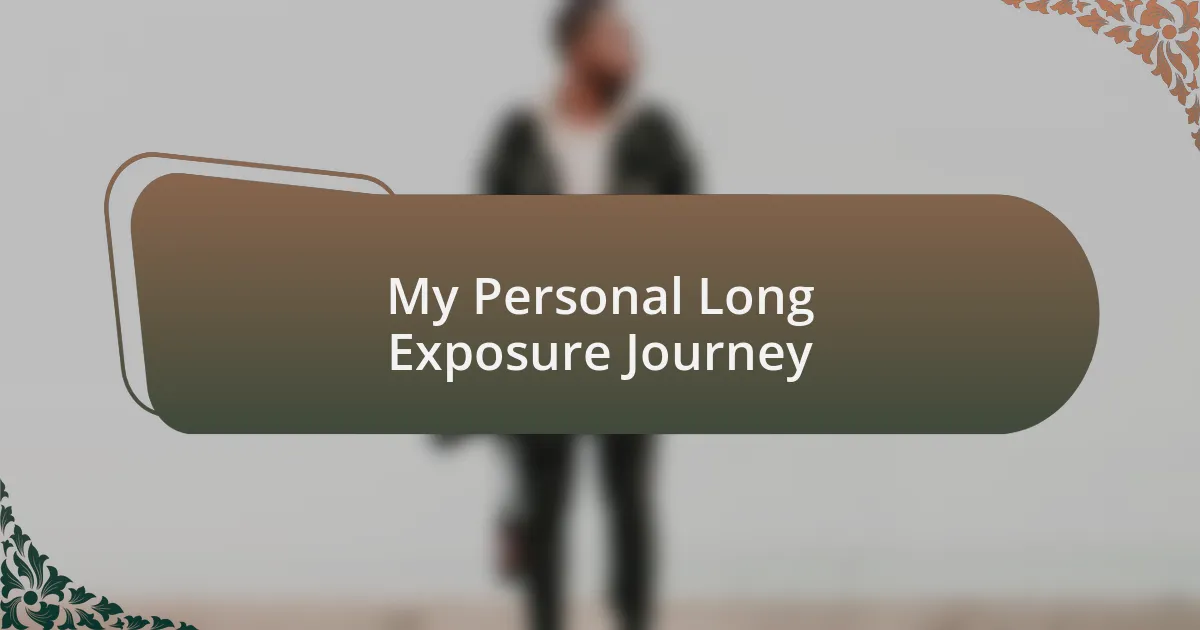Key takeaways:
- Long exposure photography captures the passage of time, creating dreamy and ethereal images by blurring moving elements like water and lights.
- Essential gear includes a sturdy tripod, ND filter for light control, and a remote shutter release to ensure stability and reduce camera shake.
- Effective long exposure techniques involve planning around light conditions, practicing patience for the perfect moment, and experimenting with different exposure times.
- The personal journey of long exposure photography reveals hidden beauty in ordinary scenes, transforming them into extraordinary works of art.

What is Long Exposure Photography
Long exposure photography is a technique that allows the photographer to capture the passage of time in a single image. By using a slow shutter speed, often several seconds to minutes, it blurs moving elements—like water, clouds, or people—creating a dreamy, ethereal look. I remember my first attempt at this; standing by a waterfall, I felt a rush of excitement as I clicked the shutter and watched the water transform into a silky ribbon.
Have you ever found yourself mesmerized by the way lights streak across the night sky? Long exposure photography enables you to freeze those moments in time, offering a unique perspective that the human eye often misses. I once captured city lights with a 30-second exposure, which turned bustling streets into flowing streams of colorful light; that experience deepened my appreciation for urban landscapes.
This technique hinges on patience and careful planning. When I set up my tripod for a sunset, I always think, “Am I ready to wait for the perfect moment?” That wait can be both thrilling and daunting, but the reward is immensely satisfying when the scene transforms into an artwork, revealing patterns and textures unseen in the fleeting moment.

Benefits of Long Exposure Techniques
Capturing the fluidity of time is one of the remarkable benefits of long exposure techniques. I recall standing at the beach during twilight, my camera securely mounted on a sturdy tripod. As the waves lapped at the shore, each long exposure transformed the frothy water into a soft, flowing veil. It felt like I was merging with the moment, allowing the serenity of the scene to seep into my very being.
Another significant advantage is the way this technique can add a sense of depth and atmosphere to your images. I remember a chilly autumn evening when I photographed a fog-enshrouded bridge. The long exposure not only softened the light but also enveloped the scene in a mysterious haze that simply cannot be achieved in standard photography. It evokes questions—what lies beneath the fog? What stories does the bridge hold? This element of intrigue keeps viewers engaged, inviting them to contemplate the narrative behind the visual.
Finally, long exposure photography allows for extraordinary creativity. While experimenting with light trails during a nighttime shoot, I played around with different exposures, forming whimsical patterns that danced across the frame. This kind of exploration is liberating; you can transform mundane scenes into extraordinary works of art. Each click of the shutter is an opportunity for discovery, pushing the boundaries of what you thought possible in photography.

Essential Gear for Long Exposure
When diving into long exposure photography, the right gear is indispensable. A sturdy tripod is non-negotiable—it’s what keeps your camera stable and free from unwanted vibrations, especially during extended exposures. I vividly recall a night at a local park where I set up my tripod to capture the starry sky. Just knowing that my camera was locked in place, secure against the slight breeze, allowed me to focus solely on the composition.
In addition to a tripod, an ND (neutral density) filter is essential for controlling light in bright conditions. I often use a 10-stop ND filter to achieve those silky smooth waterfalls during the day. It’s remarkable how such a simple piece of glass can transform the scene, making movement appear almost ethereal. Think about it—would you rather shoot a waterfall with that choppy, frozen look or with a captivating, fluid flow that draws you into the moment?
Lastly, don’t overlook a remote shutter release. This tiny device lets you trigger your camera without touching it, helping to eliminate any potential shake. I remember positioning my camera to capture the glow of city lights reflecting on a river. When the release clicked without any physical contact, it felt like magic, as if I was orchestrating the universe to create art without disturbance. Wouldn’t you agree that taking precise control over every aspect elevates the entire shooting experience?

Tips for Effective Long Exposure
When working with long exposures, one vital tip is to plan your shoot around the light conditions. I remember experimenting at dusk, where the transition between daylight and darkness presented a unique opportunity. It’s fascinating how the mix of warm hues and growing shadows can dramatically influence your images—are you ready to experiment with different times of day?
Another effective approach is to embrace the power of patience. I learned this firsthand while capturing a sunrise at the beach. Standing in the stillness as the sky gradually lit up was mesmerizing; each moment added a layer to my shot. The practice of waiting can feel arduous, but the anticipation often pays off with breathtaking results—don’t you think some moments are worth the wait?
Finally, don’t shy away from experimenting with exposure times. I vividly recall pushing my limits during a shoot at a bustling city intersection, where I tried multiple settings to capture the flow of traffic. Longer exposures resulted in gleaming light trails that added a dynamic quality to my shots. What fascinating effects might you uncover by altering your exposure durations?

My Personal Long Exposure Journey
My journey with long exposure began on a rainy evening. I ventured out with my tripod, determined to capture the beauty of the illuminated streets reflecting on the wet pavement. As I watched the falling rain blur into soft lines on my camera screen, I felt a sense of tranquility wash over me—how often do we get to see the world in such an ethereal way?
One memory that stands out is my first attempt at photographing star trails. I set up my camera in a remote location, far from city lights. As I took the long exposure shot, I felt a rush of excitement watching the tiny, flickering lights create arcs across the night sky. Was I truly capturing the dance of the universe, or was it just my imagination? That indescribable thrill of being immersed in nature while observing celestial patterns was an experience I will cherish forever.
Over time, I’ve learned that long exposures have a way of revealing beauty hidden in plain sight. I remember a moment in a busy park, where I took a long exposure to capture the swirling movements of people around a fountain. The final shot transformed a mundane scene into a dreamlike swirl of life, reminding me that sometimes the most chaotic moments, when slowed down, can turn into pure artistry. Have you had similar experiences that turned ordinary moments into something extraordinary?